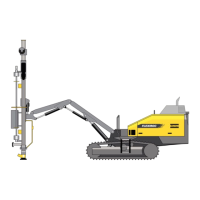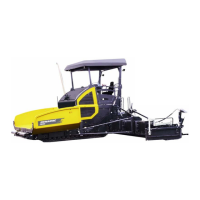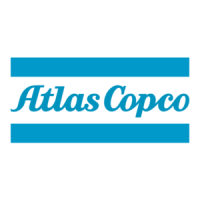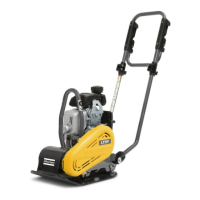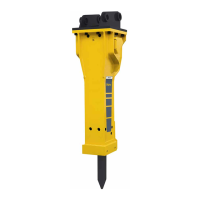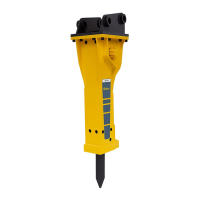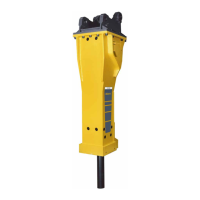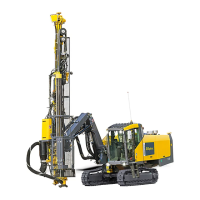FlexiROC T30 R 17 Winch
123 No: 3629357835.1.3629419915 en-US
n Deformation of the cable
17.8.1 Checking Cable for Wire Breaks
Wire breaks occur after a certain operating time depending on operating conditions and
subsequently occur more frequently. The number of wire breaks in relation to the operating
time should be determined and documented. This can then be used to estimate the future
increase in wire breaks and the foreseeable time point for scrapping. On 6 and 8-strand ca-
bles, wire breaks are primarily superficial.
n Broken wires at cable ends indicate that they have been heavily loaded and can be
caused by faulty end mountings. Shorten the cable and re-attach it. Check that the
length of the remaining cable sufficient.
n If there are concentrations of cable breaks, the cable must be scrapped. If such con-
centrations occur within a length less than 60 cm or on an individual strand, the cable
must be scrapped. even if the number of wire breaks is less than the maximum speci-
fied in the table.
Number of load-
bearing wires in
the outer strand.
Filler wire is not
considered load-
bearing.
Number of visible wire breaks that require scrapping
Machine groups M1 and M2
Cross Lay Equal Lay
Over a length of cable diameter (d)
30d 6d 30d 6d
21-220 9 18 4 9
221-240 10 19 5 10
In cables with several layers of strands, only the outer, visible layer is considered. In cables
with steel cores, the core is regarded as an inner strand and is not included. In the event of
a wire break, two ends can be visible.
17.8.2 Checking Cable for Strand Breaks
If there are strand breaks, the cable must be scrapped.
17.8.3 Checking Cable for Surface Wear
Inner surface wear is caused by friction between the wires and the strands.
Outer surface wear is caused by friction between the cable drums (rolls) and the cable un-
der pressure (acceleration and braking). Outer surface wear is visible through the forma-
tion of reflected images on the outer wires.
Surface wear is increased through faulty or no lubrication, thereby increasing the effect of
dirt and dust. Surface wear reduces static tensile strength through reduction in the cable's
metallic cross section and dynamic strength through surface wear nicks. If the cable's di-
ameter decreases more than 7% in relation to the nominal diameter of the cable, it must be
scrapped. It should be scrapped even if no wire breaks have been detected.

